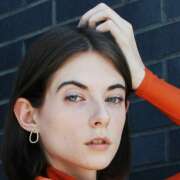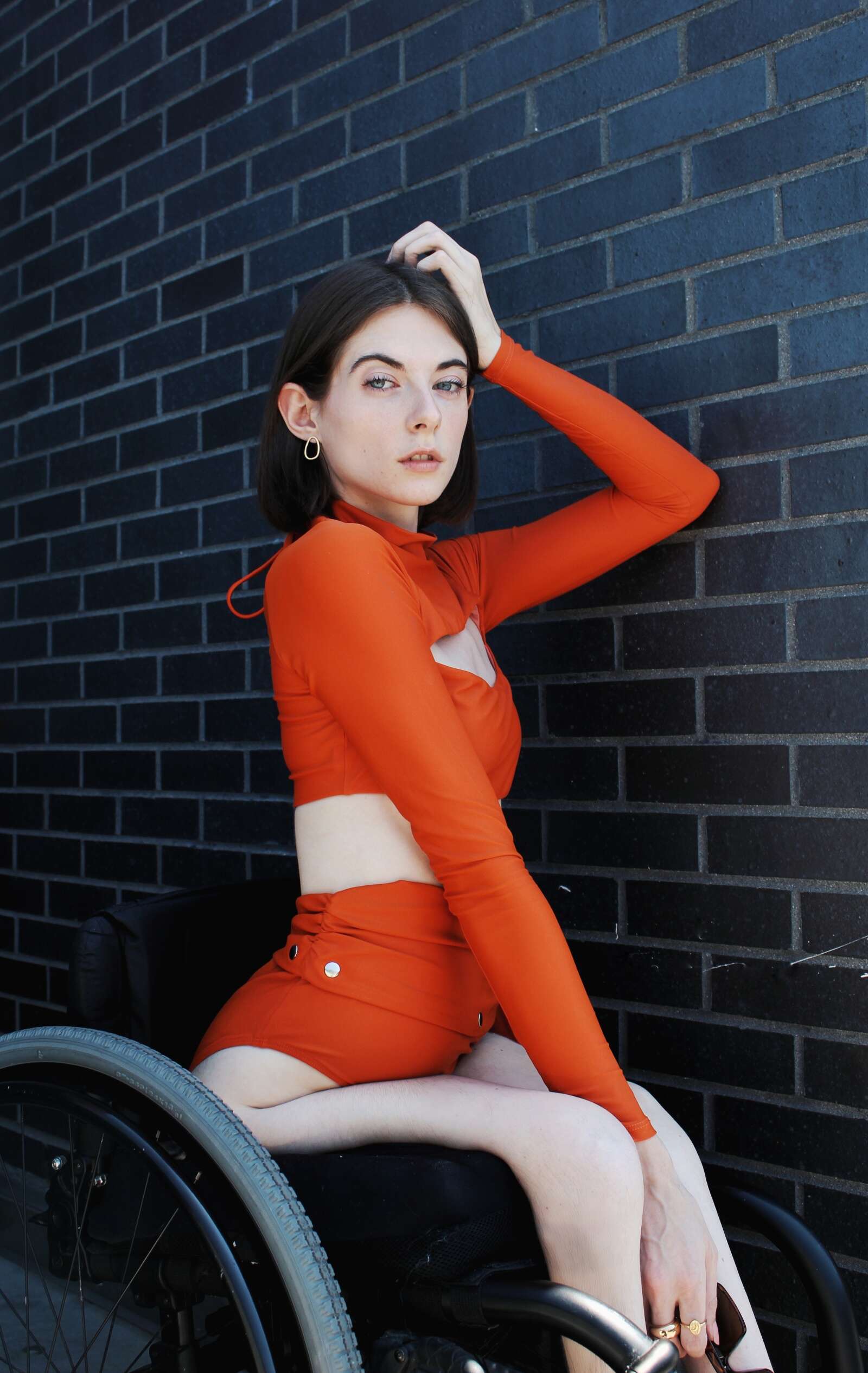I've spent days watching America’s Next Top Model and Project Runway throughout the course of the pandemic. It has transported me back to my childhood, where I voraciously watched the competitions every week. While I now watch them for tips on how to improve my craft and career, I watched with aspiration as a child. I pined over the runway walks and photographs. Over the models who became body artists, maximising a clothing item’s true potential with their movement and expressions. In the early 2000s, the models were mostly tall, thin, and white. There were the occasional plus-sized models and the occasional models of colour. There were models who survived trauma and battled invisible illness. But there was never a visibly disabled woman.
As a kid, I spent hours picking out my outfit every night for school. I became a paraplegic at age six but I always adored fashion. I loved the way creating outfits and taking pictures made me feel, especially after my car accident. I liked wheeling around the mall and getting complimented on my style and not my bravery for getting out of bed in the morning. I would search for my body type in teen magazines. Was I petite because I was short? Athletic because I had broad shoulders from pushing? No models in the magazines had a seated body type. None of the models were in wheelchairs. Until my late teens, I never saw a model in a wheelchair at all. I knew modeling was my dream, but I couldn’t see the possibilities anywhere. I did not realise how deeply this affected my self worth or body image. I did not realise how deeply the lack of representation for wheelchair users, how not being seen, had ingrained stereotypes into the world around me.

Processed with VSCO | Image Supplied
Visibly disabled women were not supermodels or actresses or pop stars. Disabled people were inspirational. Reminders to non-disabled people to appreciate what they have before they lose it. A lesson in perseverance and strength. Not desirable. Not relatable. I cannot pinpoint a single defining moment I realised I wanted to model. Instead, it was the overarching fact that I knew deep in my bones that disabled people deserved more. At my core, I wanted to feel wanted. I wanted my community to be accepted. I didn’t want little girls in wheelchairs to grow up the way I did. I wanted them to see versions of themselves on screen and in a beautiful, strong, sexy, interesting way.
Although I always dreamed of modeling, it wasn’t until I moved to New York in 2017, at age twenty-three, that I realised I could model. As Jillian Mercado, a power wheelchair user, was signed to IMG in August 2015, I came to believe that being a model wasn’t impossible. After living in New York for two years, I began to juggle graduate school and modeling. Wheeling in New York Bridal Week and New York Fashion Week, between finishing my Masters thesis. Waking up at six in the morning for a photoshoot in Brooklyn, going to poetry class on the Upper West Side at two o’clock in the afternoon. And then one February day in 2020, after modeling for a year, I received an Instagram message from a casting producer. The message detailed an opportunity that felt like everything my childhood self dreamed of. A television casting producer asked if I would be interested in modeling for one of the designers on the currently filming season of Project Runway.
I thought if this moment ever came my heart would be pounding, my breaths would be quick, my hands would be shaking. Instead, I am completely still; focused. Every millisecond matters. I am twenty-five. I am sitting in a room surrounded by women in wheelchairs. My best friends. We all intensely gape at the television.
Project Runway’s classic translucent screen shows a model approaching. The shadow poses in front of the screen. A hand on a hip, a giant skirt, big hair, a wheelchair. The model emerges from behind the screen and glides down the runway, her arms pumping to every beat of the electric song. Her blue eyes smize into the camera. As she approaches the runway’s end she pivots her wheel in a spin. She detaches the skirt’s silky top layer and whips it over her head as it turns into a cape. As she rolls away, shoulder’s back to display the cape’s grandeur, the camera slows. Savouring each wrist flicking with the wheels. As the model disappears behind the translucent screen, one last shadow of the wheel flashes by.
I thought I would cry but instead I cannot stop smiling. My partner squeezes my shoulders from above me. My friends are howling.
“That was so fucking important for our community,” GG yells.
“You made history,” Lucy beams at me.
“I am crying,” Liv texts me.
Watching that episode of Project Runway, I swear I was a little girl again. Seeing everything I didn’t know was possible come to life. Seeing myself on a runway.
I sought to be seen as equal to non-disabled models. To not be treated as a token moment. I never thought about how my wheelchair and my disabled body could be used to convey something about a piece. Like the cape of my runway outfit flowing in tandem with my wheels. I looked down at my seated body. While much of the world spends a great deal of time standing, we all also spend a great deal of time sitting. My body gives me an opportunity to display what clothing looks like seated. But not frozen. Seated in movement. A body making art, like the Project Runway and America’s Next Top models before me had done. As a signed and working model, I want disabled people and people in wheelchairs to know, you can model. You deserve to be seen.

